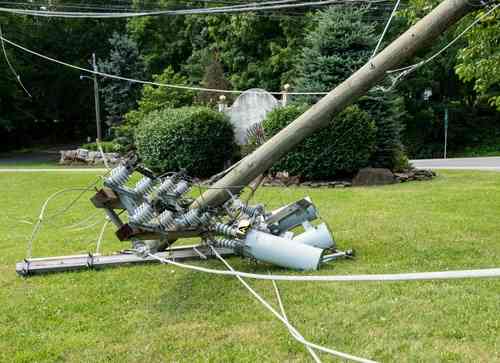The Real Cost of Reactive Maintenance for Utilities After a Wildfire
 While downed lines or other utility factors only cause a small fraction of wildfires, one fire is too many when the loss to property and life can be so massive. Wildfires and other damaging situations can result from infrequent maintenance and asset inventories. It is all too common for overwhelmed joint use and operations departments to lag behind on proactive maintenance schedules, and to respond to repair requests with a “who’s yelling the loudest” priority system.
While downed lines or other utility factors only cause a small fraction of wildfires, one fire is too many when the loss to property and life can be so massive. Wildfires and other damaging situations can result from infrequent maintenance and asset inventories. It is all too common for overwhelmed joint use and operations departments to lag behind on proactive maintenance schedules, and to respond to repair requests with a “who’s yelling the loudest” priority system.
The costs of this reactive asset management is significant in terms of bottom-line losses, legal fees, property damage, and injury.
Keeping Up with Maintenance in an Era of Joint Use Proliferation
The relentless pace of growth means it is more difficult than ever for asset owners to stay on top of repairs and maintenance requests (not to mention proactive maintenance schedules). Joint use staff shortages are rampant and the potential for problems in the field is higher.
The Financial Costs of Reactive Maintenance
For companies that own thousands or millions of poles, maintenance, repairs, and replacement costs add up quickly. Combined with the cost of staffing, many companies choose to limit proactive inspections to once every 8 to 10 years in an effort to control costs.
However, the reality of this approach ends up costing asset owners significantly more than a proactive maintenance schedule would cost.
In addition, there is a significant cost to delaying regular inspections and maintenance: replacing a failed asset is more costly than repairing it and preventing the failure. Consider the situation of a pole coming down. It requires an immediate response, and if it happens at night or over a weekend, added costs are incurred for overtime in the field. Typically, this kind of response is also more urgent, more involved, and requires more materials and skills than a proactive repair. It also requires rolling a truck and sending technicians and linemen to a single location, rather than being able to consolidate several repairs, inspections, or maintenance stops within the same area all at once. A proactive approach to asset maintenance can also prevent legal costs that result from claims on damages from failed assets.
Other Risks of Reactive Maintenance and Repairs
There is a better way. If you are ready to get started with collecting accurate and holistic data, then click the link below to speak with one of specialists. At Alden, we believe in building better communities through better infrastructure, and that starts with healthy pole maintenance.
Click here to read on as we discuss how existing fire maps can be used in coordination with asset management software to quickly and easily prioritize asset maintenance in high-risk fire zones.
